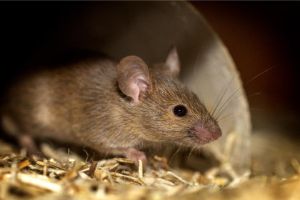How farmers can ensure they pass their pest control audits
Inspections and audits are a necessary part of any farm assurance scheme, allowing farmers to be able to continue to buy and use professional use rodenticides, without having to undertake a training course. What’s more, the standards outlined by bodies such as Red Tractor should be considered as best practice to ensure safe and effective pest management is carried out on farms across the country.
 Here Laurence Barnard, Country Business Manager for Professional & Speciality Solution at BASF, decodes some of these standards to help farmers follow the correct procedure and pass any upcoming audits.
Here Laurence Barnard, Country Business Manager for Professional & Speciality Solution at BASF, decodes some of these standards to help farmers follow the correct procedure and pass any upcoming audits.
In October 2021, Red Tractor published an updated specifications outlining changes to some elements of vermin control requirements. with some specific issues surrounding baiting in grain stores. After feedback from farmers, pest controllers and other stakeholders, these changes were promptly amended in 2022.
|
· No build-up of vegetation close to farm structures that could harbour vermin. This should be the first step in any farmer’s integrated pest management programme. Undertaking environmental management, such as tidying the site and cutting back shrubbery, is key as it reduces the opportunity for rodent runs and harbourage, as well as exposing rodents to predators such as birds of prey, cats and dogs. · A site survey should be completed at least quarterly. This means that a routine inspection of your rodent control work, and written report should be carried, and should include dates of inspection, areas inspected, findings, actions and recommendations required, and the date of actions completed. Although if you are using any control measures onsite, such as rodenticides then you should be doing this site at least every four weeks. · Dead or trapped vermin should be searched for and disposed of when bait points are checked. It’s important that farmers are always searching for rodent bodies during a control programme. This will help to reduce the risk of secondary toxicity and the spread of disease. Again, an easy way to evidence this is to add a tick box on visit reports with a quantity box of how many you found (if any). · Birds, rodents and domestic animals should be prevented from entering all long-term storage. This may seem obvious, but this point puts emphasis on you to ensure stores are in good condition to prevent access and undertake any proofing works required, as it’s a vital part of an Integrated Pest Management (IPM) programme. · Prior to treatment with baits, the use of non-chemical controls methods should be considered and an Environmental Risk Assessment should be undertaken before bait is laid. Non-chemical considerations includes things like, environmental management and proofing to prevent rodents in the first place, as well as considering other methods such as shooting or trapping. We recommend using a non-toxic monitoring paste by BASF as an essential tool for detecting early signs of rodent activity. · Where baits are used, a Bait Plan should identify the location of bait points, bait used, bait point inspection and replenishment dates. This information should already be on a site map and reports, however adding a separate “bait plan” with this information will make it easy to find for an auditor. · Bait is prevented from contaminating animal feed, feed storage areas, and crop storage area. It goes without saying that bait stations and boxes should be secured and clearly identified. Ensure storage areas are thoroughly cleaned and inspect every inch for any entry points or damage where rodents may enter. Make sure you clean up any food spills immediately. · Permanent baiting should not be routinely undertaken and toxic bait is removed when treatment is finished. After successful chemical treatment using a cholecalciferol rodenticide such as Selontra®, we recommend switching to Monitoring Paste when the infestation is under control. This will allow you to detect any early signs of rodent activity in the future, as well as make rodenticides used in the future more readily accepted by rodents. This will not only give you better rodent control overall, but also save you money as you’re not wasting bait when you don’t actually need it. · Non-target animals should not have access to baits and product label directions must be followed. Think Wildlife’s Campaign for Responsible Rodenticide Use (CRRU) reported that routine monitoring from 2016 to 2021 found rodenticide traces present in nearly 90% of barn owls, demonstrating that more needs to be done to reduce the risk to all non-targets. Secure bait points, whether it is using bait boxes or covered and protected, and the correct amount of bait used are essential to reducing the risk to wildlife and livestock. Ultimately, audits simply require farmers to evidence the activity they are often already carrying out. With all of the correct essential paperwork, including a site survey, environmental risk assessment, bait plan and COSHH assessment, farmers can ensure they pass audits with little additional work. For more advice on rodent control, and for information on Selontra® and Monitoring Paste, visit https://www.pestcontrol.basf.co.uk/en/ |
- Log in to post comments


 So what does the vermin control section of the Red Tractor specification require, and what does it actually mean? Below are some of the key points of the specifications and what you need to do to meet the requirements;
So what does the vermin control section of the Red Tractor specification require, and what does it actually mean? Below are some of the key points of the specifications and what you need to do to meet the requirements;